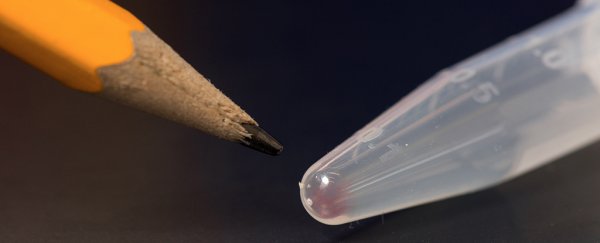DNA - or deoxyribonucleic acid, to give it its full title - is one of the basic biological building blocks of all living organisms, containing the genetic code that plays a large role in making us who we are. And now scientists have managed to use the same molecules to store digital photographs and retrieve them intact.
If the process can be refined and scaled up, that means we could see the end of data centres used by the likes of Facebook and Amazon, says the team behind the technology. Because DNA is so microscopic in size, the researchers calculate that files that would typically be stored in a data centre the size of a supermarket could be squashed into a space the size of a sugar cube.
The University of Washington team, in partnership with engineers from Microsoft, was able to encode four digital images into strings of DNA. This required converting the 1s and 0s of the files into the four basic elements of DNA - adenine, guanine, cytosine, and thymine. But even more challenging was reversing the process without any errors.
If you're particularly interested in compression algorithms, Huffman coding was the approach they used. For the rest of us, that basically means distinctive markers similar to postcodes for directing mail were placed inside the synthesised, artificial DNA molecules to make them easier to locate and read back, as Gizmodo's Jamie Condliffe reports.
And it worked, with the researchers able to successfully store and then retrieve the files.
The team now thinks that DNA encoding could have real potential for archiving data in the future, though it's not so suitable for information that needs to be instantly and continually accessed.
"Life has produced this fantastic molecule called DNA that efficiently stores all kinds of information about your genes and how a living system works - it's very, very compact and very durable," said one of the team, Luis Ceze. "We're essentially repurposing it to store digital data - pictures, videos, documents – in a manageable way for hundreds or thousands of years."
"This is an example where we're borrowing something from nature - DNA - to store information," he adds. "But we're using something we know from computers - how to correct memory errors - and applying that back to nature."
"How you go from ones and zeroes to As, Gs, Cs and Ts really matters because if you use a smart approach, you can make it very dense and you don't get a lot of errors," explained one of the researchers Georg Seelig. "If you do it wrong, you get a lot of mistakes."
As promising as these initial results are, there's still a lot of work to do before the first DNA data centre can be opened. The procedure has so far only been tested on a small scale, and needs expensive, heavy-duty lab equipment for the time being.
The team's findings have been presented at the ACM International Conference on Architectural Support for Programming Languages and Operating Systems in Atlanta, Georgia.
